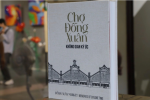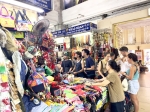This ancient folk verse from a hundred years ago still vividly captures the essence of the largest market in the capital, a meeting point for every traveler, even those visiting Hanoi only once. First, let's explore the history of this market. According to historical records, Dong Xuan Market has its roots dating back to before 1888, situated south of the Tô Lịch River, flowing from Hang Ca Street along Gach Alley. During the late 19th century when the French occupied Hanoi, the capital had two major markets on the banks of the To River that flowed through this area. These were Bach Ma Market, located near a temple of the same name, and Cau Dong Market, situated at the remaining site of the Cau Dong Pagoda at 38B Hang Duong Street. Both markets gathered on the riverbank under boats, crowded with buyers and sellers. Near Cau Dong Bridge back then, there was a stone statue of Buddha, seated in a round shape, with an exposed belly, leaning slightly backward, and a smiling face. Traders in the market often came to light incense to pray for good fortune.
In 1889, during the French occupation of Hanoi, the Tô Lịch River and Thái Cực Lake were filled to create new streets, consolidating Bach Ma and Cau Dong Markets into the vacant land next to Dong Xuan Temple. Initially, they surrounded the area with bamboo fences, compelling people to enter the market, with someone collecting market tickets at the entrance (managed by a French subcontracting company on an area of about 6,500 square meters).
 The place where the 19th-century market tolls are collected by the market guards
The place where the 19th-century market tolls are collected by the market guards
Gradually, the market grew, and the French expanded its scope, constructing five market bridges with iron frames resembling beehives, covered with metal sheets, each bridge measuring 52 meters in length and 19 meters in height. Each market bridge was designated for the sale of specific goods, be it dry or fresh products. After completion, the market initially operated twice a week, but due to the growing demands of economic development, it eventually became a daily market, from morning to night. Dong Xuan Market became the bustling trading center of the capital, offering a variety of goods, from gold, silver, silk, to needles, threads, fruits, vegetables, meat, and even featuring numerous eateries, gift shops, fortune tellers, street singers, and antique shops. At this time, the French referred to the market as Grand Marché, but Dong Xuan remained the widely used name among the capital's residents.
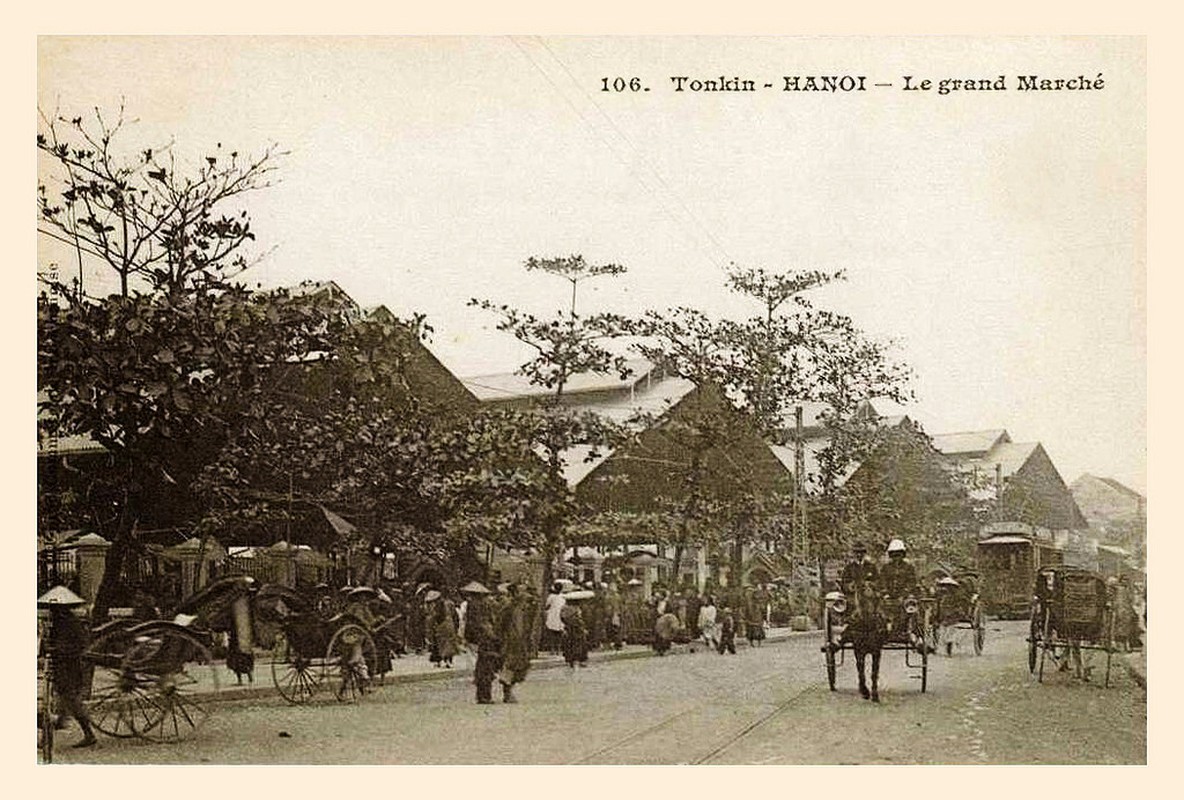
The Dong Xuan Market in the 19th century consisted only of a metal frame and a corrugated iron roof
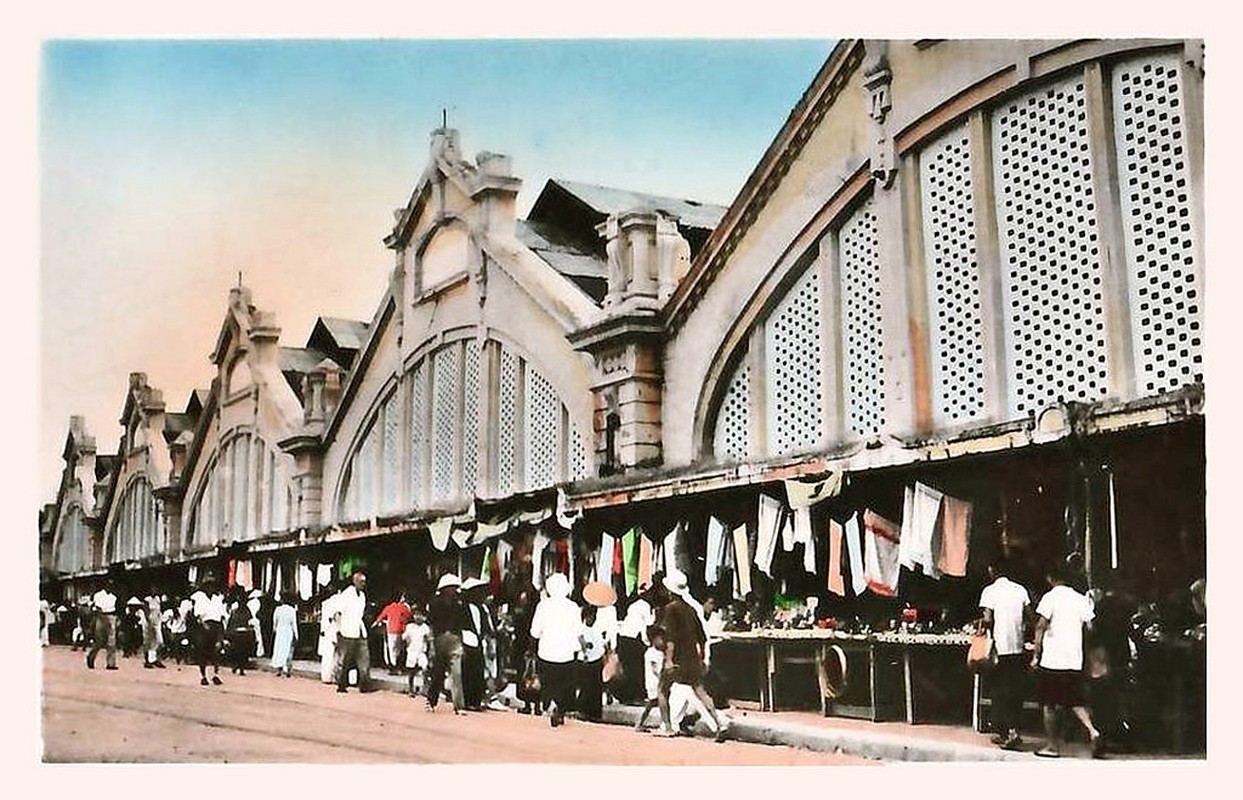 Dong Xuan Market in the 1930s
Dong Xuan Market in the 1930s
There are several folk verses, each containing about 60 lines describing the vibrant and noisy scenes of the market in those days, often sung by street performers right within the market, on simple straw mats laid on the sidewalks. In December 1946, Hanoi marked the beginning of the nationwide resistance war. The fierce battle of the capital lasted for 60 days and nights, fiercely defending every corner of the city. Dong Xuan Market became a fortress protecting the northern part of Sector One. Despite numerous French attacks that included bombings in support of tank assaults, they failed to breach the defense. They concentrated forces on a major attack on the market fortress from the early morning of February 14, 1947, following a bombardment. With 400 well-armed French soldiers and tanks attempting to breach the market, only 19 defenders stood their ground, engaging in hand-to-hand combat on every corner of the stalls, fighting to the last breath. When ammunition ran out, they fought with bayonets, shovels, machetes, canes, bricks, and stones. Hundreds of French colonialists and four tanks and armored vehicles were destroyed. Finally, due to their small numbers and overwhelming force, the 19 soldiers chose to fight to the last breath. The heroic battle on February 14, 1947, at Dong Xuan Market etched a golden page in the resistance history of the capital. Today, on the left side of the market, at the intersection with Hang Khoai Street, there is a monument commemorating the soldiers who sacrificed their lives for the homeland at Dong Xuan Market.
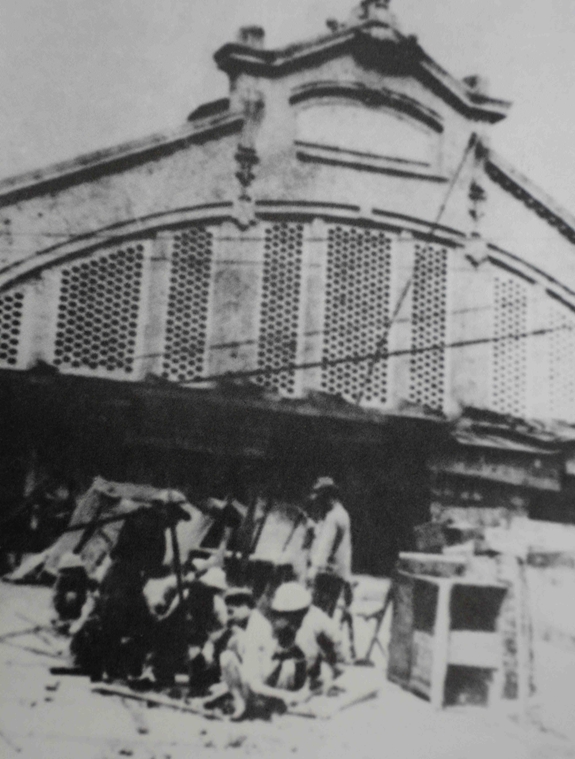 Self-defense forces in the Dong Xuan area are currently digging trenches and laying mines (December 1946)
Self-defense forces in the Dong Xuan area are currently digging trenches and laying mines (December 1946)
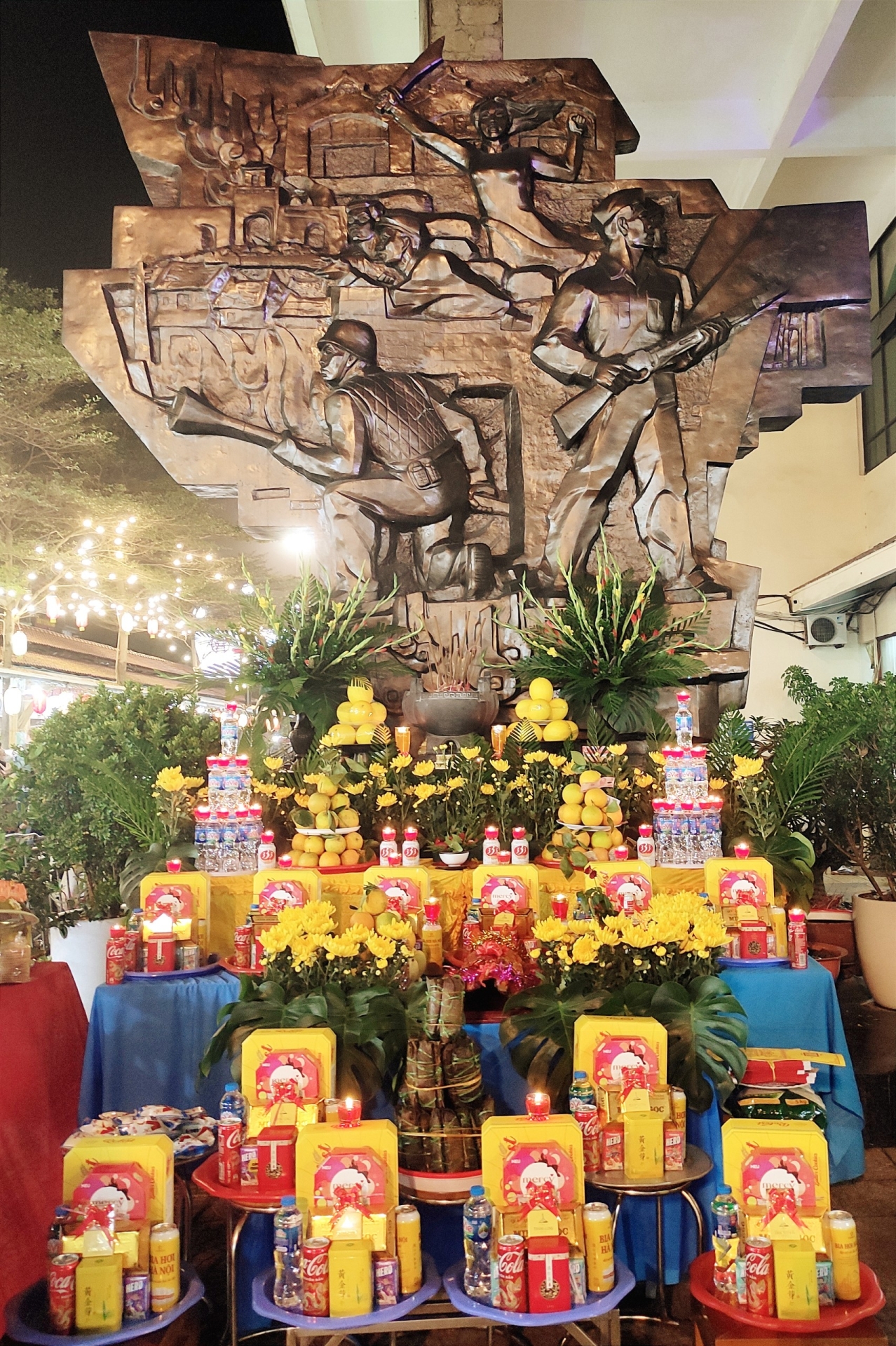
Candlelight ceremony to honor the fallen heroes at the Hanoi Monument in the winter of 1946
With the return of peace, Dong Xuan entered a new era, forming cooperative trading groups, fostering a sense of unity and cooperation in various sectors. The market expanded to the north with Bac Qua specializing in selling grains, food, fresh produce, livestock, birds, ornamental fish, fresh flowers, and plants. In the late 1980s to early 1990s, the market was reconstructed into a modern three-story building, but on July 14, 1994, a major fire destroyed many parts of the market. Two years later, the market was rebuilt, still three stories, each floor covering 9,000 square meters, equipped with elevators for transportation of goods. The front of the market still retains the features of the five original market bridges as a tribute to the familiar image of the market that has been standing for over a hundred years in our capital city. Trading in the market today has embraced civilized and modern practices. Sellers communicate with customers in a cultured, polite, elegant manner, maintaining trust to ensure that Dong Xuan continues to be the cultural and commercial rendezvous of Hanoi, a city for peace, forever "The most joyful place is Dong Xuan Market."
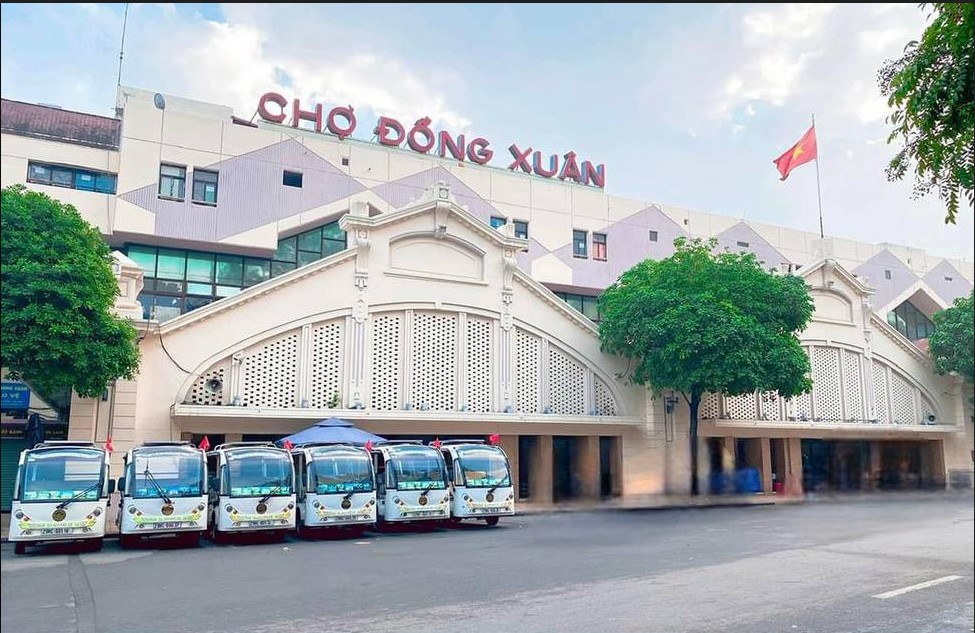
Dong Xuan Market today
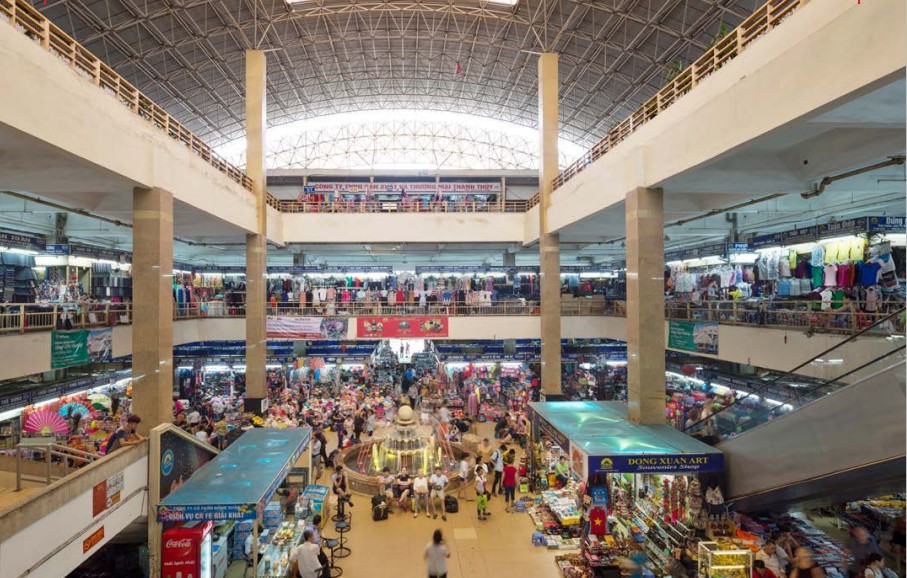
Dong Xuan Market today



